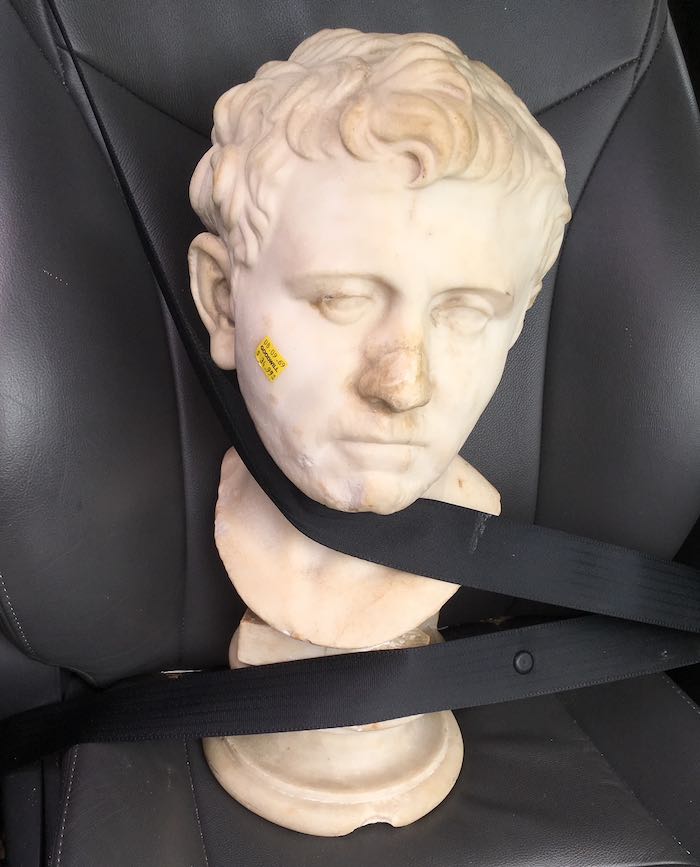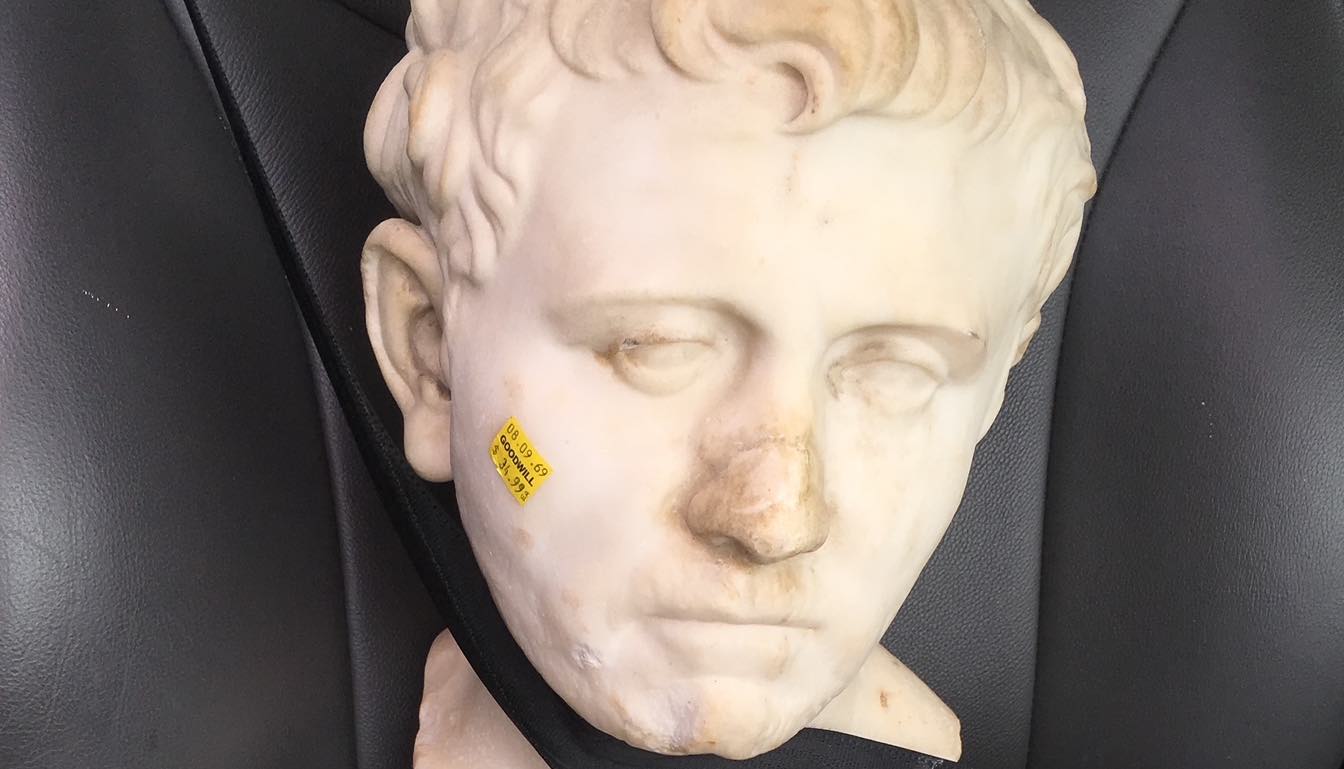
A chipped marble statue bought for $35 from a thrift store has turned out to be a priceless 2,000 year-old Roman bust.
When Austin, Texas-based art collector Laura Young purchased the marble bust at a local Goodwill store in 2018, she didn’t know that she had accidentally stumbled upon a centuries-old sculpture that once belonged in the collection of King Ludwig I of Bavaria.
At the time, the find was hilariously pictured buckled into the seat of Laura’s car—complete with price sticker on its cheek.
The work, which was initially identified by Sotheby’s consultant Jörg Deterling and further authenticated by the Bavarian Administration of State-Owned Palaces, Gardens, and Lakes, is now on view at the San Antonio Museum of Art (SAMA) through May 2023.
Once installed in the courtyard of the Pompejanum (a replica of a Roman villa in Pompeii built by the King in Aschaffenburg, the Roman bust, which dates from the late 1st century BC to the early 1st century AD, disappeared following World War II.
Young, who actively looks for unexpected or undervalued artworks and antiques, discovered the Roman bust on the floor beneath a table at a Goodwill charity store.
After purchasing it, she noticed how old and worn the sculpture looked and began a multi-year journey to determine its authenticity and origin.
LOOK: A Chair Bought for $5 in a Junk Shop Sells at Auction for over $16,000
She met with experts in the University of Texas-Austin art history department, as well as several auction houses. After Deterling made the identification, he supported the process of connecting Young with the German authorities. As part of the agreement to return the sculpture to its rightful home in Germany, the Bavarian agency agreed that the work could go on view at SAMA to engage the public with its history and story.
“My husband and I were on a road trip when I got an email confirming the head was indeed ancient Roman. Soon after that, Sotheby’s got in touch,” Young said. “There were a few months of intense excitement after that, but it was bittersweet since I knew I couldn’t keep or sell the (bust). Either way, I’m glad I got to be a small part of (its) long and complicated history.”
“He looked great in the house while I had him,” she added.
It’s also a wonderful example of international cooperation.
POPULAR: Class Ring Lost in Maine 47 Years Ago is Found in Finland and Returned to Widow Who Missed It
But, the mystery continues…
How the Roman bust arrived in Texas remains a mystery. In January 1944, during World War II, Allied bombers targeted Aschaffenburg and seriously damaged the Pompejanum, where the work had been installed. Authorities began a restoration of the Pompejanum in 1960 and it opened as a museum in 1994.
The bust, however, disappeared after the war, and its location remained unknown until Young’s discovery. After the end of World War II, the US Army established various military installations in Aschaffenburg, many of which remained until the end of the Cold War, and most likely a returning soldier brought the sculpture to Texas.
“We are very pleased that a piece of Bavarian history that we thought was lost has reappeared and will soon be able to return to its rightful location. We would like to take this opportunity to thank the San Antonio Museum of Art for their support in returning the ancient portrait,” said Bernd Schreiber, president of the Bavarian administration.
CHECK OUT: Digging a Well They Accidentally Discover a $140 Million Star Sapphire Weighing Half a Ton
Inspired by the excavations in Pompeii, King Ludwig I had the Pompejanum built by the architect Friedrich von Gärtner in 1840-1848, to support engagement with ancient cultures. The Roman bust was among many works housed in the replica villa.
The bust may portray a son of Pompey the Great (106–48 BC), who was defeated in civil war by Julius Caesar. Some unusual details of the bust resemble other portraits of the famous general, including the curling lock of hair on his forehead, his furrowed brow, and the creases on his neck, but with the addition of the traditional beard of mourning worn by his sons after Pompey’s death.
ENCOURAGE Friends to Keep Hunting for Treasures – Share This on Social Media…





















I don’t quite understand why the Young’s were unable to keep or sell the bust.
Antiquities laws, I believe. Just like you can’t take rocks from around the Parthenon or Acropolis.